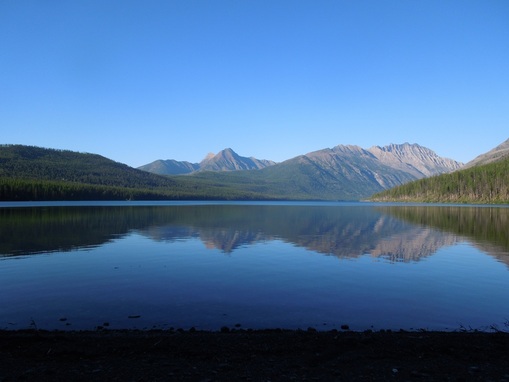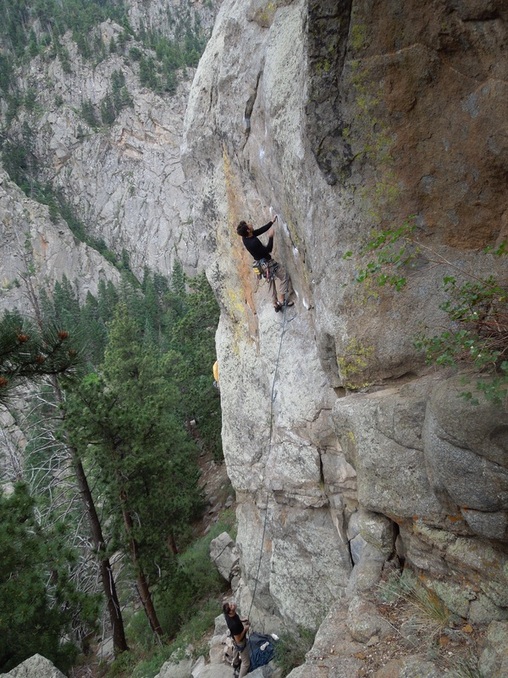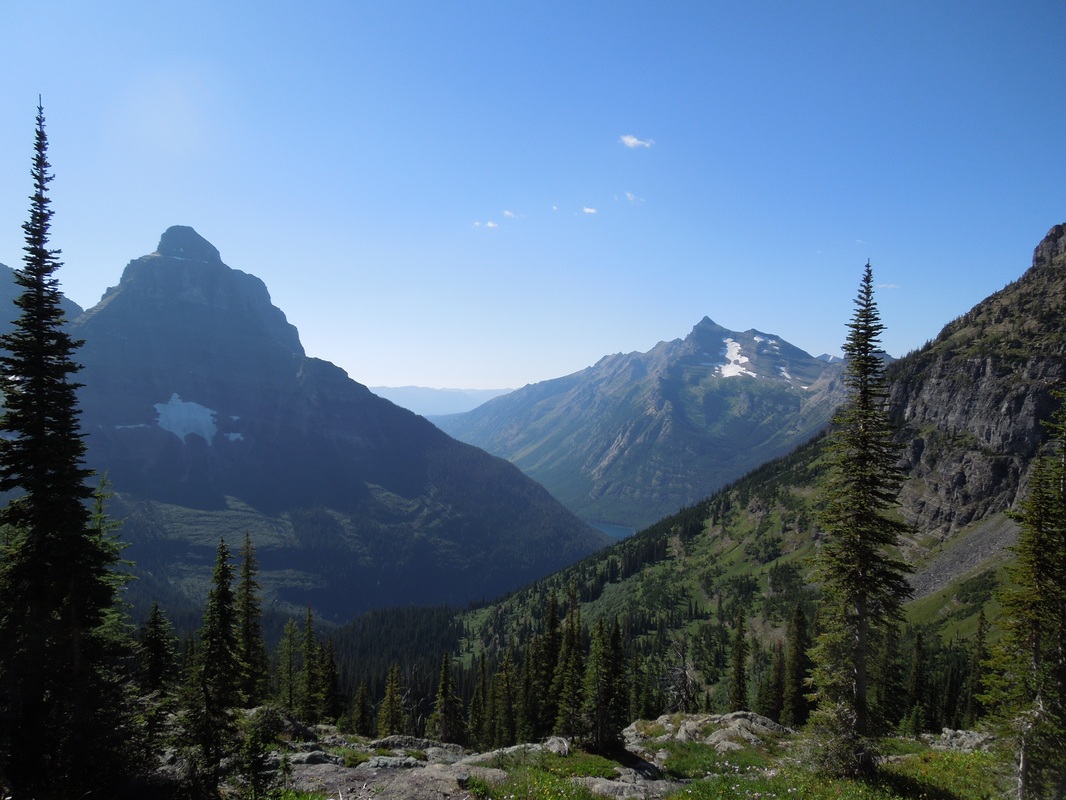The Boulder Pass Trail in Glacier National Park. Photo Courtesy of Dylan Jones
As a traveling rock climber road tripping to America’s greatest climbing destinations, our ropes don’t often take us to areas where relevant data for ASC studies can be collected. Classic crags are developed, crowded, and show endless signs of wear and tear from homo erectus. Environmentally-sensitive areas and species are often off limits to the climbing community, and for good reason. When we hopped on board for the ASC Pika Project, we had expected to spot plenty of the sensitive little mammals in the many mountain ranges on our trip itinerary. My climbing partner and I left our home in West Virginia on June 1st, and, until recently, had been disappointed with our lack of data contribution. It was during a brief backpacking foray into the backcountry of Glacier National Park that we finally found, observed and recorded data to send into the office in Bozeman.
We entered the park through Polebridge at the western entrance, and set up shop at the Kintla Lake trailhead. Our trip was an intense overnighter consisting of a 17.5 mile hike to Boulder Pass Campground with an elevation gain of 3,280 feet. After passing deep blue lakes, rushing glacial runoff waterfalls and flowering alpine meadows, we encountered a grizzly bear at the top of the pass relaxing on a snowfield. But the real excitement came when I spotted a pika foraging amongst the rocks bordering a small snowmelt pool. We spotted several other pika as well, each engaging in different activity. I shouted and ran for my notebook to jot down all the respective data. It was this moment that made me realize what it means to be a part of ASC, no matter how big or small the contribution is. It takes the activities we as adventures love, which can be seen as selfish pursuits, and turns them into something beyond ourselves. That’s the beauty of ASC. What was going to be a hiking adventure between two friends transformed into part of a study that assists the many scientists who are hard at work discovering the secrets behind the environments we embrace every day. Like the clownfish and the anemone, ASC fosters a truly symbiotic relationship that appears to be thriving, and we look forward to further interaction with the wonderful people who make it happen.
Dylan Jones is an ASC adventurer and avid climber based in West Virginia. He spent the summer traveling the US on a climbing road trip and participated in the Pika Monitoring Study along the way.



